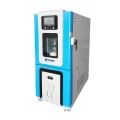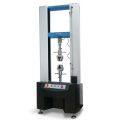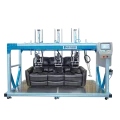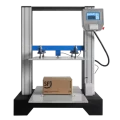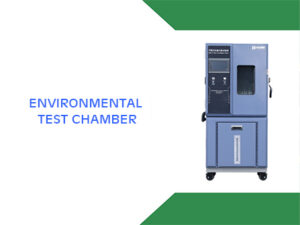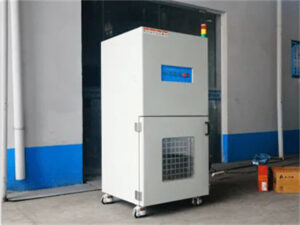We know that some places like laboratories, medical workshops, precision machining workshops, and so on, due to their complexity, to ensure the high quality of products, high precision, high purity, and high yield, the temperature, and humidity of the ambient air need to be strictly controlled, so the special precision constant temperature and humidity air conditioner is particularly important.
To better understand the constant temperature and humidity air conditioning unit, for this reason, Haida made some simple descriptions of the basic working principle of the constant temperature and humidity system:
1.Refrigeration system
The refrigeration system is one of the key parts of the constant temperature and humidity machine. The refrigeration system of constant temperature and humidity is composed of two parts, respectively called the high-temperature part and the low-temperature part. Each part is an independent refrigeration system.
The evaporation of the refrigerant in the high-temperature part absorbs the heat of the refrigerant from the low-temperature part and vaporizes. The evaporation of the low-temperature refrigerant absorbs heat from the object being cooled (the air in the laboratory) to obtain the cooling capacity.
The high temperature part and the low temperature part are connected by an evaporative condenser, which is both the condenser of the high temperature part and the condenser of the low temperature part.
2.Heating system
The heating system is relatively simple compared with the refrigeration system. When the temperature of the adjusted air is lower than the required temperature, the computer controller of the constant temperature and humidity air conditioner will be connected to the electric heater, and the air will be heated and sent to the air conditioning room through the fan to achieve the heating effect.
3.Control system
The control system is the core of the comprehensive laboratory, which determines the temperature rise rate, precision, and other important indicators of the laboratory. The controller of Haida Laboratory has a large screen medium temperature LCD, RS-232 interface, to realize the monitoring network, fuzzy intelligent control, and control accuracy can reach ±1℃ and ±5%RH~10%RH.
The control system is the core of the integrated laboratory chamber, which determines the rate of temperature rise in the laboratory, precision and other important indicators. The Haida laboratory controller has a large screen LCD display of medium temperature, RS-232 interface to achieve monitoring and networking, fuzzy intelligent control, control accuracy can reach ±1℃ and ±5%RH~10%RH.
4.Humidity system
The humidity system is divided into two subsystems: humidification and dehumidification.
The humidification method is generally steam humidification, that is, low-pressure steam is directly injected into the experimental space for humidification. This humidification method has fast humidification speed and sensitive control, especially when cooling down, it is easy to achieve forced humidification.
When the humidity in the adjusted air is greater than the required value, the compressor is started for refrigeration, and the air is cooled to below the dew point temperature through the evaporator to precipitate the moisture in the air, to achieve the effect of dehumidification.


